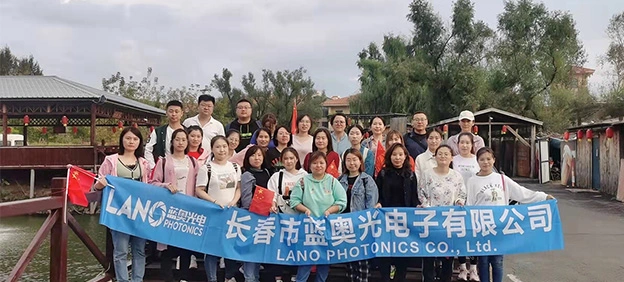Infrared cameras have revolutionized various industries, from security and surveillance to scientific research. They allow users to detect heat patterns in the environment, which is invaluable for a wide range of applications. However, when it comes to choosing the right infrared camera for your needs, the decision often comes down to uncooled vs. cooled infrared cameras. Both types have distinct advantages, but which one is right for you?
Infrared cameras are devices that detect infrared radiation (heat) emitted by objects in their field of view. These cameras create thermal images or thermograms that provide insights into temperature differences within a scene. Infrared technology is widely used in applications such as building inspections, security surveillance, firefighting, and medical diagnostics.
Types of Infrared Cameras
There are two main types of infrared cameras: uncooled and cooled. The primary difference between them lies in the technology used to detect infrared radiation. Let’s explore each type in detail.
Infrared cameras capture heat signatures in the form of infrared radiation. This radiation is detected by a sensor, which converts the thermal energy into an image. The sensor’s ability to detect minute temperature differences determines the resolution and quality of the thermal image. Infrared cameras use specialized lenses and sensors to capture heat from various objects and translate that data into a visual format that can be interpreted by the user.
Uncooled infrared cameras are the more common type of thermal camera. They use sensors that do not require cooling systems, making them more affordable and lightweight. The sensor material, often made of amorphous silicon or vanadium oxide, absorbs infrared radiation and generates an image. These cameras are typically used in situations where portability and ease of use are critical.
Cooled infrared cameras, on the other hand, feature sensors that are cooled using cryogenic technologies such as liquid nitrogen or thermoelectric cooling. Cooling the sensor allows it to operate at lower temperatures, which enhances its sensitivity to infrared radiation. As a result, cooled infrared cameras offer superior image quality and better resolution compared to their uncooled counterparts.
When comparing the performance of uncooled and cooled infrared cameras, several factors come into play:
Sensitivity and Resolution: Cooled infrared cameras generally offer higher sensitivity and better image resolution because cooling the sensor allows it to detect finer temperature differences. Uncooled infrared cameras, while still effective, may not capture as much detail in low-contrast situations.
Temperature Range and Detection Capabilities: Cooled infrared cameras can detect a broader temperature range, making them ideal for high-precision applications. Uncooled cameras, however, are typically limited in their temperature range, which may impact their effectiveness in certain use cases.
Image Quality: The image quality produced by cooled infrared cameras is usually sharper and clearer due to their superior sensitivity and lower noise levels. Uncooled infrared cameras, while providing acceptable quality, may produce grainy or less detailed images in certain conditions.
Cost-effectiveness: One of the biggest advantages of uncooled infrared cameras is their affordability. They are much less expensive than cooled cameras, making them an attractive option for users on a budget.
Portability and Ease of Use: Uncooled cameras are lighter and more compact, making them ideal for on-the-go applications. Their ease of use and relatively simple maintenance make them a popular choice for everyday tasks.
Applications: Uncooled infrared cameras are often used in building inspections, home energy audits, security, and surveillance due to their low cost and portability.
Superior Image Quality: The primary advantage of cooled infrared cameras is their superior image quality. They offer sharper, more detailed images, which is crucial in applications that require high precision, such as military operations or scientific research.
High Sensitivity and Accuracy: Cooled infrared cameras are highly sensitive and can detect even the smallest temperature differences, making them ideal for applications that demand accuracy.
Applications: Cooled infrared cameras are commonly used in defense, military, and medical applications, where high resolution and accuracy are essential.
While uncooled infrared cameras offer many benefits, they do have some limitations:
Lower Sensitivity: Uncooled cameras may struggle to detect subtle temperature differences, which can affect the accuracy of the images.
Limited Temperature Range: Their temperature detection range is typically smaller than that of cooled cameras, which can limit their use in extreme conditions.
On the flip side, cooled infrared cameras also have drawbacks:
High Cost: Cooled infrared cameras are significantly more expensive than uncooled ones, both in terms of initial purchase and maintenance costs.
Larger Size and Weight: Due to the cooling system, cooled cameras tend to be larger and heavier, making them less portable than uncooled models.
In conclusion, both uncooled and cooled infrared cameras have their unique advantages, and choosing between them depends largely on the specific application and budget. Uncooled infrared cameras are ideal for general-purpose use, offering cost-effectiveness, portability, and ease of use. They are particularly well-suited for industries like security, building inspections, and basic surveillance. On the other hand, cooled infrared cameras deliver superior image quality, higher sensitivity, and better resolution, making them the go-to choice for high-precision tasks in fields like military, defense, and scientific research.
For those looking for a reliable, high-performance infrared camera that balances affordability with excellent functionality, the PL640 Uncooled Infrared Polarization Camera from Lano Technology is a standout option. With advanced features such as polarization imaging, the PL640 offers enhanced detection capabilities, allowing for more accurate temperature mapping and surface analysis. Whether for industrial inspections, security, or research, this camera offers an outstanding solution without compromising on quality or performance.


